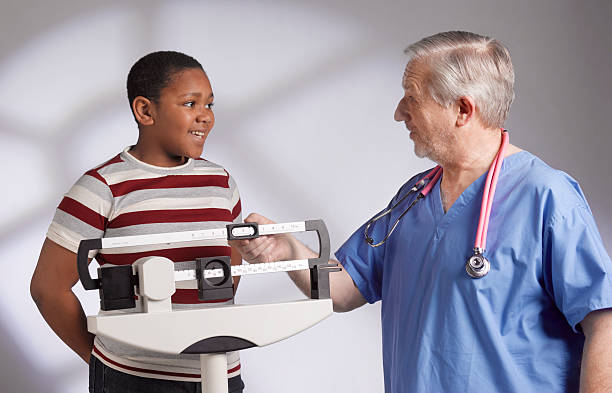
A leading pediatricians' group has issued new guidelines on treating obesity in children and teens that, for the first time, call for early, aggressive intervention that can include weight-loss drugs and surgery.
"There is no evidence that 'watchful waiting' or delayed treatment is appropriate for children with obesity," Dr. Sandra Hassink, an author of the new American Academy of Pediatrics (AAP) guidelines and vice chair of the Clinical Practice Guideline Subcommittee on Obesity, said in a statement.
About 20% of U.S. children now live with obesity, about 15 million children altogether, according to the U.S. Centers for Disease Control and Prevention.
RELATED: Words Can Wound: Tips For Talking to Kids About Obesity
New guideline recommendations
The new guidelines recommend against watching and waiting, instead suggesting families of children aged 6 and up should work with their pediatricians on behavior and lifestyle changes. In some cases, families of children aged 2 to 5 should, too, the guidelines recommend. This should include at least 26 hours of counseling over about a year.
The new guidelines also suggest that pediatricians should offer obese children aged 12 and up new weight-loss drugs that include Orlistat, Saxenda, Qsymia and Wegovy. Phentermine is approved for kids over 16 years of age, the guidelines said.
"The breakthrough that happened in the last few years was people started realizing that there are hormones made in the gut that have multiple roles related to obesity. By targeting these, medications can help people feel full faster and help stabilize insulin levels," Dr. Joan Han, chief of the division of pediatric endocrinology and diabetes at Mount Sinai Kravis Children's Hospital in New York City, told NBC News.
The new AAP guidelines also recommend discussing weight-loss (or "bariatric") surgery with teens aged 13 and up who have severe obesity.
"The sooner, the better for many things," Han said. "There is research that shows that getting bariatric surgery sooner can reverse health issues like type 2 diabetes and high blood pressure, which is why surgery should be considered for pediatric patients."
Still, medications and surgery are not first-line treatments, Hassink cautioned.
They should only be considered if lifestyle changes haven't worked and only in special circumstances, she added.
Hassink told NBC News that lifestyle changes may be especially hard to adopt for overworked and low-income families.
"There are a huge number of drivers of obesity that come from the environment itself. The more adverse the environment around you, the harder it is to live a healthy lifestyle," Hassink explained. "There is work going on, but we can safely say that all of us in this country are living in an environment that tends to promote obesity across the board."
The new guidelines also recommend changes to public health policies that would create safe, walkable neighborhoods and giving schools tools for supporting healthy lifestyles.
"We can recommend more servings of vegetables and more fun physical activity. However, if a person's neighborhood has no grocery stores to shop at or sidewalks or parks to walk in, these recommendations are not realistic," Dr. Roy Kim, a pediatric endocrinologist at Cleveland Clinic Children's, in Ohio, told NBC News. "The best, most effective, safest and most economical approach will always be prevention."
RELATED: How Parents Can Take Charge of Childhood Obesity
Planning for better health
As a family, the Centers for Disease Control recommends doing the following to promote better health:
- Try to model healthy eating patterns.
- Find ways to help children move more, such as through athletics, dancing, games, and active chores.
- Help children and teens get sufficient sleep.
- Consider ways to replace screen time.
Working with your child's doctor will also be key. The new guidelines recommend that your child's doctor should be doing the following:
- Screening regularly for obesity, using body mass index (BMI) as a measure. This calculation uses your child's height and weight to determine a percentage based on age (unlike in adults, where the number alone is used). Although it isn't perfect, it can help determine where your child stands. A BMI higher than the 95th percentile for a child's age is considered obese.
- Look at the whole picture. Why is your child overweight for their age or at an unhealthy weight? Where does your family live? What is your socioeconomic status? What can you share about beliefs, daily life, school, ethnic background, and community connections? Willingness and ability to make lifestyle changes? All of this, along with family medical history, matters when it comes to understanding and helping develop a good plan.
- Explain options for treatment. The best evidence-based treatment is called intensive health behavior lifestyle treatment, or IHBLT. IHBLT consists of face-to-face, family-based, multidisciplinary counseling on nutrition and physical activity, preferably based in your community and connected to community resources. Twenty-six hours over at least three to 12 months is recommended. The downside is, these programs aren't always easily available to most families.
If a comprehensive program isn't available, your child's doctor may work with them regularly to try to manage any circumstances that may be contributing to obesity. He or she may also recommend medications or bariatric surgery.









